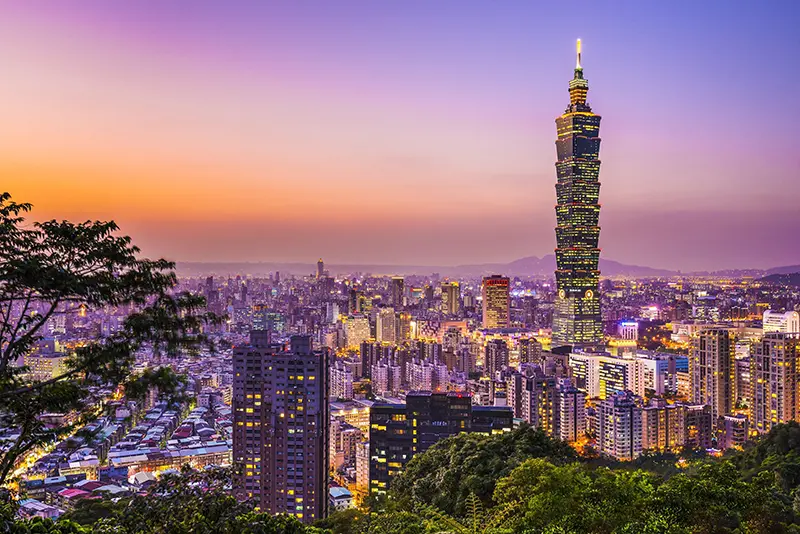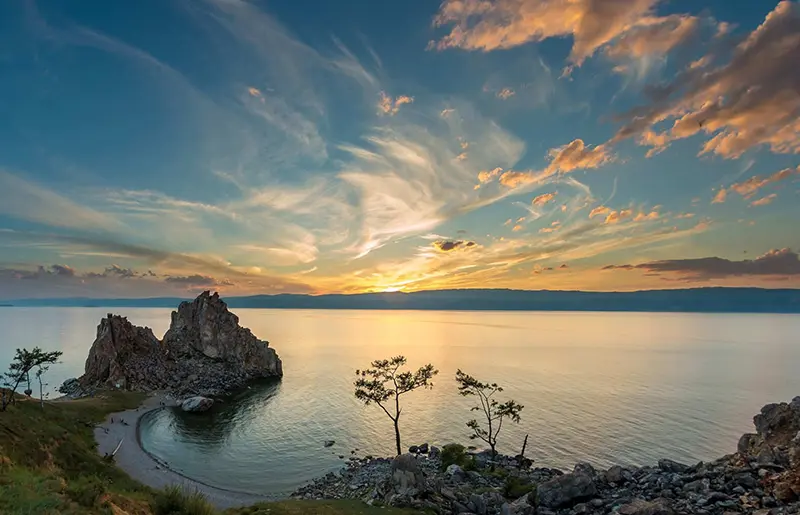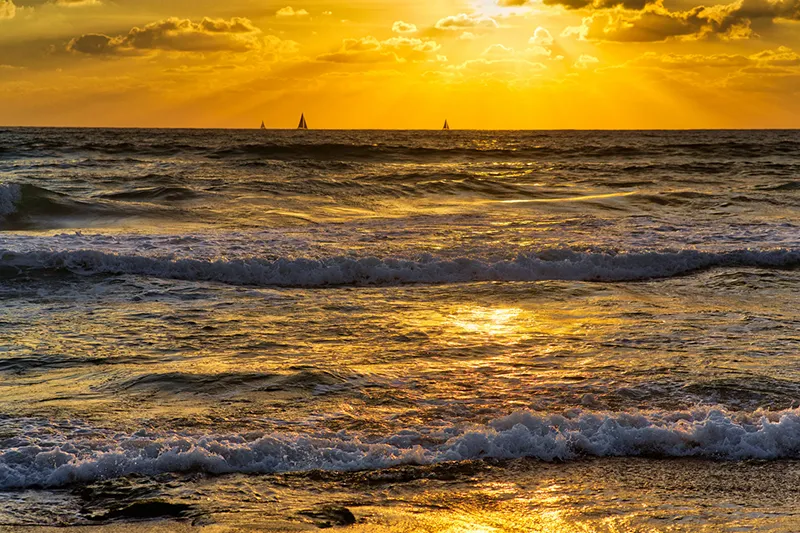Taipei is the vibrant capital of Taiwan, combining ultra-modern skyscrapers and ancient temples. The city is known for its iconic Taipei 101 Tower, bustling night markets such as Shilin, and fabulous cuisine. Tradition and innovation harmoniously coexist here: you can visit the Imperial Palace Museum with priceless artifacts or head to the Beitou hot springs. Taipei impresses with its hospitality, cleanliness and ease of transportation, making it an ideal destination for travelers.
Geography
Taipei, Taiwan’s largest city and capital, is surrounded by hills with an average elevation of 300 meters. The city center and its western part are located in the Taipei Lowland, which was a huge lake in ancient geological times. Its edges smoothly transition into the uplands in the south, east and especially in the north, where the highest point of the city, Mount Tsixing, is located. It is actually Taiwan’s highest inactive volcano, located in Yangming National Park. Taipei’s second highest point is Mount Datong (1,092 meters) in the northeast of the city. To the southeast stretches a chain of Songshan Hills and Qingshui Gorge, which are covered with dense forest. In general, mountains of volcanic origin and hills occupy more than half of the area of the city, volcanic activity only occasionally makes itself known: signs of eruption of Datong volcano was observed 5.5 thousand years ago.
The natural boundaries of the city are the Danshuihe River in the west, the Xindian River in the south and the Jilong River in the north. In ancient times, the riverbanks around Taipei were places of active trade, where crafts were developed and the foundations of local culture were laid.
History of the city
The beginning of the history of human life in the Taipei area dates back to the Upper Paleolithic and Neolithic periods. The first people settled here about 50 thousand years ago (Yuan-shan site). Scientists assume that initially representatives of the Australoid race, which at that time inhabited the whole of Southeast Asia, lived here. This is evidenced, in particular, by the Taiwanese languages – belonging to the archaic group of Austronesian languages. The aborigines of Taiwan are descended from the speakers of these languages.
The Chinese have known about the island for a long time: the first written mention of Taiwan is recorded in Chinese sources in the III century BC. However, the Chinese did not intend to colonize it for a long time. Expansion from the mainland began in the III century A.D. Arriving in the area of the future Taipei, the Chinese found here the aboriginal tribe Ketagalan, engaged in gathering, fishing and hunting. The tribe led a nomadic way of life. By now the language of this tribe has completely disappeared.
In the XVII century. begins the active resettlement of Chinese from the southern province of Fujian to the territory of Taipei: in 1709 here appeared the first Chinese village Manga on the banks of the river Danshuihe. This village existed until 1875, when it became the center of Taipei Prefecture of Danshuihe Province of the Qing Empire. As a result of the Japan-China War of 1894-1895, Taiwan was ceded to Japan, and from 1895-1945 it was the seat of the Japanese administration, which renamed Taipei as Taihoku. After the defeat of Japan in World War II in 1939-1945, the city returned to its former name – Taipei. It became the administrative center of the Republic of China, which did not want to be part of the People’s Republic of China with Beijing as its capital.
That is why Taipei is officially referred to by the authorities of the Republic of China as “the place of temporary residence of the Government of the Republic of China during the communist insurgency”. The PRC insists that Taipei is the capital of Taiwan Province of Taiwan within the PRC. In fact, Taipei remains the capital of the state of the Republic of China.
Taipei’s relatively sheltered position in the intermountain, abundant fresh water, excellent climate, and the hard and long labor of previous generations of Taipei residents, together with its rich cultural and historical heritage, have made Taipei a city of advanced technology.
From the very beginning of Chinese exploration of Taiwan, Taipei the birthplace of the Ketagalans has been an outpost of energetic Han Chinese immigrants in the north of the island. Today, the predominant ethnic groups in the city remain those who call themselves Taiwanese (84%) descendants of Chinese who emigrated to the island in the 18th and 19th centuries from Guangzhou and Fujian provinces. The number of Chinese who came to Taipei after World War II barely reaches 14%.
The rapid development of the economy was facilitated by the opening of Jilong Port in the far northeast of the island. Gradually, the new urban area of New Taipei grew between Jilong Port and Taipei. This corridor had a steadily increasing population and made Jilong and Taipei form a single urban area. Taipei itself has become one of the most densely populated cities in the world and is home to Taiwan’s central government offices, including the residences of the president and prime minister, as well as the parliament.
A very big problem of the city has become an aging population (citizens over 65 make up more than 10%), which is typical for large Asian cities that have made a sharp leap in their economic development. In addition, the population is unevenly distributed: out of 12 districts only three are densely populated. Air pollution from automobile exhaust causes many Taipei residents to wear respirators on the streets.
Due to the public transportation system, the uneven development of the districts is smoothed out. Also due to the dense transportation network, economic potential and developed infrastructure Taipei has become a world center of exhibitions and conferences of all kinds.
The most popular venue for these events is the world’s third tallest building, the 101-story Taipei 101 skyscraper, which has become one of the main symbols of modern Taipei. The architecture of the skyscraper combines modern technology and materials with the traditional Chinese concept of harmony, which is an integral part of the national culture.
Taipei has the largest collection of Chinese art in the world, presented in the National Palace Museum Gugong, which houses 720 thousand exhibits, taken from the “Forbidden City” in Beijing in 1949.
Two large memorial structures recall Taipei’s complicated history. Sun Yat-sen Memorial Hall is built in the style of Chinese palace architecture and can accommodate up to 3000 people and Sun Yat-sen’s library (140 thousand volumes). The Chiang Kaishi Memorial Hall is a white marble building whose roof follows the outline of the roof of the Temple of Heaven in Beijing.
As for more ancient history, all that remains in Taipei from the Qing Dynasty is the North City Gate. The West Gate and the city walls were demolished during the Japanese occupation, the South and East Gates have undergone extensive remodeling already under the current administration and have finally lost their original appearance.
The most famous, respected and beautiful religious building is the Lunshan Temple, with its elaborately carved stone columns and dragon-shaped roof.
General Information
- The main city of the Republic of China.
- Location: north of Taiwan Island, Taipei Basin. Political, economic and cultural center of the Republic of China.
- Languages: North Chinese (Mandarin), Min, Hakka.
- Ethnic composition: Chinese (Han) – majority, others (Hoklo, Hakka, Taiwanese aborigines – Amis, Atayal, Paiwan, Rukai, Yami, Taroko, Bunun, Puiyuma, Tsou, Saisat, Tao, Kuvalan, Sakizaya, Seding).
- Religions: Buddhism, Taoism, Christianity, Islam.
- Currency unit: new Taiwan dollar.
- The largest rivers: Danshuihe, Xindian, Jilong.
- Administrative division: 12 districts.
- The most important districts: Daan, Shilin, Shongsan, Datong.
- Airport: Taiwan Taoyuan International Airport.
- Port: Jilong seaport.
- Area: 271.8 km2.
- Length: from north to south – 27.655 km, from east to west – 20.754 km.
- Population: 2,618,772 (2010) (agglomeration – 6,900,273, 2010).
- Population density: 9,635 people/km2.
- Highest point: Mount Cixin (1120 m).
Economy
- GDP per capita: $25,000 (2007).
- Industries: computer and telecommunication equipment and components, electronic engineering, shipbuilding, automobile assembly, precision instrumentation, metallurgical, pulp and paper, chemical, pharmaceutical, perfume, textile, food (fish canning).
- Services: tourism, financial, trade, transportation.
Climate and weather
- Tropical monsoon.
- Summer is hot and humid, winter is short and mild.
- Average temperature in January: +14.4°C.
- Average temperature in July: +28.4°C.
- Average annual precipitation: 2400 mm.
- Relative humidity: 76.6%. Typhoons.
Attractions
- Cult buildings: Lunshan Temple (XVIII c.), Baoan Temple (early XIX c.), Confucius Temple (second half of XIX c.);
- Sun Yat-sen Memorial Hall (XX c.);
- Chiang Kaishi Memorial Hall (XX c.);
- Taipei 101 skyscraper (509.2 m);
- Yangming National Park;
- Museums: National Palace Gugong, Hwa-Kang, National Historical, Shunyi Tradition, Fine Arts, Chen, Modern Art; in National Theater;
- National Concert Hall;
- Shilin Night Market;
- North City Gate;
- Zhinangong Palace;
- Parks: Taizhi, Da An;
- Beitou Hot Springs;
- Ruins of Hongmaocheng Fortress;
- Ruins of San Domingo Fortress;
- Lin Antai Farm;
- Wulai Village and Waterfall
Fun Facts
- Life is not easy for pedestrians in Taipei. Streets are designed almost exclusively for vehicular travel, and many lack sidewalks.
- In March 1996, the freeway in front of the presidential residence – decided by Taipei’s mayor – changed its name from “Long Live Chiang Kaishee Road” to Ketagalan Boulevard, in honor of the island’s indigenous people.
The bronze hinged doors of the Chiang Kaishi Memorial Hall in Taipei weigh 75 tons. - Major mass festivals in Taipei include the Lantern Festival, Dragon Boat Festival and Mid-Autumn Festival.
- Free restrooms and information kiosks are available at all Taipei Metro stations. An interchange is considered a single station. Some lines have tire-powered trains: the car axles have rubber tires that roll on concrete or steel chutes. A free subway diagram in one of 15 languages is available at Taipei Metro ticket offices.
- “Taipei 101” is the third tallest skyscraper in the world, after ‘Burj Khalifa’ (Dubai, 828 meters) and ‘Abraj Al-Bait’ (Saudi Arabia, 601 meters). This skyscraper has some of the fastest elevators in the world, rising at 63 km/h. The danger of collapse in a hurricane or earthquake is reduced by an inertial damper – a 660-ton pendulum ball 5.4 meters in diameter, located between the 87th and 91st floors. “Taipei 101” became the first building in the world to break the half-kilometer barrier.
- Taipei is known worldwide for its urban garbage recycling program. Between 1998 and 2008, the amount of recycled garbage increased from 6% to 32%.
- Beitou, the northernmost of Taipei’s 12 districts, is known for its hot springs, of which there are more than 30. Their name comes from the Ketagalan word “pau-tau” or “witch”: in the old days, people thought that the water gushing from the ground was the result of witchcraft. In fact, it is a consequence of geothermal activity in the Datun volcanic zone.




